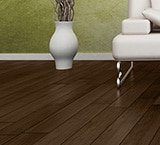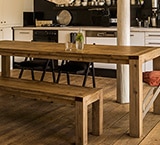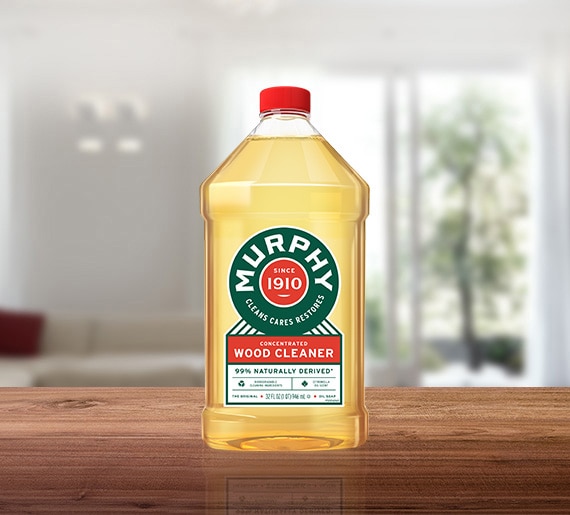HARDWOOD FLOORS & FLOORING
The History of Wooden Floors

Wood floors have such a rich history. The wood floors you see today, enhancing a home's decor, are vastly diverse in species, patterns, styles and designs, as well as the types of materials used to create the wood flooring. Wooden floors, however, began as a luxury for only the wealthiest residents, such as royal families.
PRE-COLONIAL: OF DIRT AND SAND
Centuries ago, a dirt floor was the norm for most, due to the high cost and time involved in crafting a wood floor. With no special machinery, the very first wooden floors were hand-crafted, labor-intensive projects that required scraping and sanding literally rubbing the floors smooth with lose sand. As America was formed through its first settlers, the continent's ubiquitous forests made wood flooring available to the masses.
LOCAL TREES: GROWTH OF WOOD FLOORS
The type of wood chosen for one's flooring depended on the most common species of wood available locally to cut down. Particularly with common tree varieties like elm, according to Wood Magazine, those making the floor sought out the heart of the wood to craft the planks. Due to their advanced age, the trees used had a huge diameter that made the heartwood of the tree the most tightly grained, allowing it to be the most durable flooring at the time for laying wagon beds and other alternatives to the home. Although it was not sanded as smoothly as it was for the wealthy, the rough hand-sewn planks were soon being used as common flooring.
Floors made with wide boards are the oldest and simplest type, usually crafted from softer wood like pine because it's easier to saw. The eight-inch (or wider) wooden floor boards were commonly used for kitchens and bedrooms. Narrower, more elegant boards of two to four inches were then placed in the more formal rooms of the home. It wasn't until the machines of the late 1800s that the modern wood floors we have come to know today were developed.
MACHINE AGE: PERFECTION
The first tongue-and-groove flooring, allowing planks to be fitted tightly together, was invented in 1885 thanks to a machine called the side-matcher. At the end of the 19th century, the end-matcher was invented, before which time flooring was simply nailed to joists. The beginning of the 20th century brought the use of subflooring, which allowed for floor planks to be cut down from 7/8 inch thick to a narrow 3/8 inch.
World War II produced more change with the manufacturing of inexpensive carpet, putting a dent in the popularity of wood as the flooring of choice. After about 30 years, people discovered wooden floors again as they sought elegance and restored aging homes. Soon, engineered wood crafted from composite materials became another less-expensive way to offer homeowners a wooden floor.
UNFINISHED BUSINESS
As these early unfinished floors easily became worn, there was a need seen for creating materials to protect the flooring. Wax, an early finish known for its ability to fend off water and wear, needed to be reapplied often as it wore off. After the Civil War, penetrating varnish oils began to catch on. Around 1950, modern-day polyurethane became residents' go-to finish. Unlike the varnish that just soaked into the wood, polyurethane served as a hard protective surface layer that could be mopped and cleaned easily while holding off typical wear.
In the 21st century, wooden floors are so sought-after, ceramic tile manufacturers are crafting tile that mimics hardwood. Laminate flooring has also begun allowing people to invest in the classic look of wood floor. Even with these other choices, however, traditional wood flooring is the nicest when seeking natural warmth, beauty and elegance to complement a Home's Decor.
This article was brought to you by Colgate-Palmolive Company, the makers of Murphy® Oil Soap. The views and opinions expressed by the author do not reflect the position of the Colgate-Palmolive Company.









